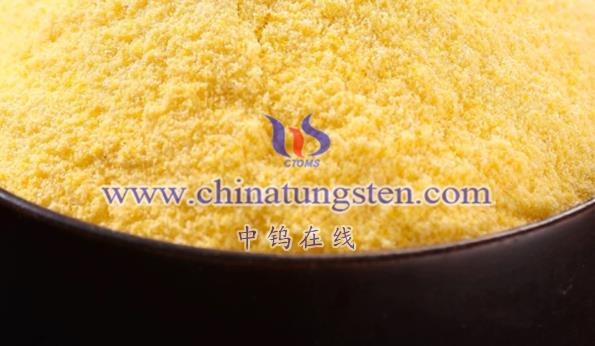
Hexagonal tungsten oxide nanosheets (h-WO₃) have a distinctive crystal structure characterized by specific lattice arrangements, atomic interactions, and nanoscale morphology. Below is a detailed analysis of their crystal structure:
- Crystal Lattice Arrangement
Hexagonal System
The crystal structure of h-WO₃ belongs to the hexagonal crystal system, which is defined by six-fold symmetry in the lattice. This system is common among many metal oxides, particularly in phases formed under high-temperature or specific synthesis conditions.
Lattice Parameters
In the hexagonal system, the lattice parameters include aaa, bbb (or equivalently a1a_1a1, a2a_2a2, since a=ba = ba=b), and ccc.
- aaa and bbb represent the lattice dimensions on the basal plane.
- ccc denotes the height of the unit cell along the vertical axis.
The specific values of these parameters depend on the synthesis method and conditions. However, the hexagonal symmetry ensures consistent geometric properties.
- Atomic Arrangement
Alternating W and O Atoms
The crystal structure features a periodic arrangement of tungsten (W) and oxygen (O) atoms, forming a stable composition. This alternating pattern stabilizes the structure and contributes to its unique physical and chemical properties.
WO₆ Octahedra
The fundamental building block of h-WO₃ is the WO₆ octahedron. Each tungsten atom is surrounded by six oxygen atoms, forming an octahedral geometry.
- These octahedra are connected through shared oxygen atoms, creating a three-dimensional network with hexagonal symmetry.
- The arrangement of WO₆ units determines the material’s anisotropic properties and plays a critical role in ion intercalation and electronic behavior.
- Nanoscale Features
Nanosheet Morphology
At the nanoscale, h-WO₃ appears as thin, flat sheets. These nanosheets:
- Possess a high aspect ratio, which enhances their surface area.
- Feature significant surface defects such as oxygen vacancies and hydroxyl groups, which are critical for catalytic and electrochemical applications.
Surface Characteristics
The surface morphology of the nanosheets can vary depending on the synthesis method, but typically they exhibit:
- Smooth and uniform surfaces, promoting better interaction with other materials.
- High reactivity due to the abundance of exposed active sites.
- Stability and Phase Transition
Metastable Phase
The hexagonal phase of WO₃ is often considered a metastable phase under ambient conditions.
- At elevated temperatures (e.g., above 400°C), it can transform into more stable phases such as monoclinic WO₃.
- Controlling synthesis conditions, such as temperature, pH, and reaction time, is crucial for stabilizing the hexagonal phase.
Thermal and Structural Stability
While h-WO₃ is stable under moderate conditions, its properties may degrade if exposed to prolonged high temperatures or harsh chemical environments. Understanding these transitions is essential for optimizing its use in applications.
Summary
The crystal structure of hexagonal tungsten oxide nanosheets features:
- A hexagonal lattice system with specific lattice parameters.
- Alternating W and O atoms forming a network of WO₆ octahedra.
- High surface area and active sites due to nanosheet morphology.
- Potential metastability, requiring careful control of environmental conditions.
These structural characteristics make h-WO₃ nanosheets highly suitable for applications in catalysis, energy storage, gas sensing, and optoelectronics. Advanced characterization techniques like XRD, TEM, and Raman spectroscopy are often used to analyze and optimize their structural features for specific applications.
More details of tungsten oxide product, please visit website: tungsten-oxide.com
Please contact CHINATUNGSTEN for inquiry and order of tungsten oxide:
Email: sales@chinatungsten.com
Tel.: 86 592 5129595















